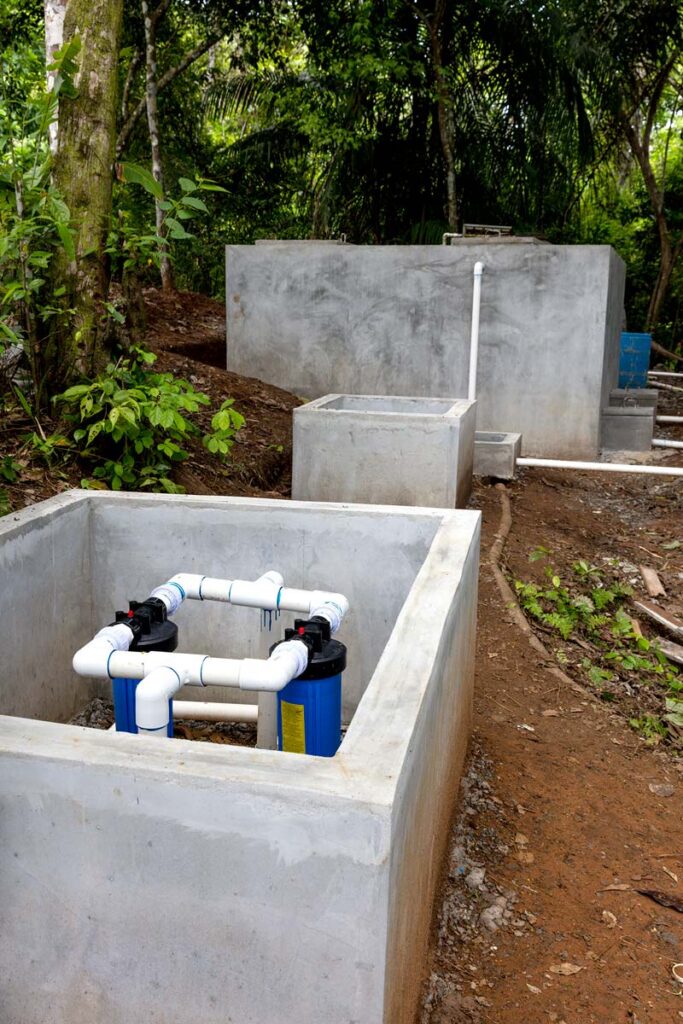Sustainable Communities: The Advances of a Great Effort
Sustainability is a term that is known to many in the communities of the Panama Canal Watershed (PCWB). This is […]
Sustainability is a term that is known to many in the communities of the Panama Canal Watershed (PCWB). This is a positive sign of the socio-environmental support implemented by the Canal in these areas, which today translates into green initiatives and joint actions that are gaining more and more strength.
To understand the reason for each of the initiatives that the Canal is developing in this territory, as part of the integrated management of the watershed, it is important to know that they are programmed to achieve an ambitious goal: to achieve sustainability in the communities and reach that longed-for balance in three dimensions.
Environmental
Standing at the edge of the dock that connects to the Ermitaño Hummingbird Trail in the Quebrada Ancha community of Lake Alhajuela, young Ángel Rodríguez waits. That morning, as a member of the local tourism committee, he will receive a group of German visitors.
But Angel is not alone. Thirty members of this village have distributed the work, without distinction of gender, to attend to the tourists: from driving the boat, to conducting the guided tour, to preparing food for the visitors.
This is an organized community, which since 2008 has identified tourism as a great opportunity, a complement to the usual agricultural work in the area. This allows them to continue producing in an environmentally friendly way, obtaining higher income for their products while taking care of nature, one of the pillars of sustainability.
Ismael Muñoz can tell the story as one of the promoters of the idea. He recognizes that it has not been an easy road, but that what has been achieved is the result of the committee’s efforts and the advice they have received from different organizations, including the Panama Canal.
“We see tourism as an added value that allows us to support our families; it is something that benefits us while we contribute to the protection of water resources,” explained the community leader.
During the current year, the Panama Canal has rehabilitated four other trails in communities in the watershed where similar conditions exist, and has provided them with new infrastructure and facilities for tourists, allowing the locals to continue with their enterprise.
Economic
Liduvina Rivera, a small producer in the community of La Negrita de Capira and a member of the Association of Coffee Growers of the Cirí Grande and Trinidad Rivers sub-watershed of the Panama Canal (ACACPA), is clear about the concepts of sustainability. Few people speak with as much pride about what they do as she does, especially because she is convinced that her work and that of everyone in the group generates benefits for the planet.
“We struggle to offer a product that we like and that allows us to continue planting coffee, to improve our quality of life and achieve development in the communities, while we take care of the soil and water sources”, assured the producer, while replacing her field tools with gloves, apron and other necessary equipment for the roasting process of the product in the roasting plant of the group in Las Gaitas de Capira.

Liduvina is one of the producers who have heeded the Panama Canal’s call to unify efforts; associativity is promoted as the way for farmers to be strengthened by accessing training that will enable them to improve their products, better manage their crops and negotiate prices more efficiently. This has a positive impact on the quality of life of families and the local economy.
Social
In the community of Quebrada Benítez there is joy. A group of young people from the village is working hard, supporting the crystallization of the desire to have a new aqueduct that guarantees water throughout the year and that has been made possible through a project promoted by the Panama Canal with the support of the Ministry of Health (MINSA).
Standing in front of the new infrastructure, Miguel Villarreal, regional head of MINSA’s Drinking Water and Sanitary Works Department, reviews instructions on how the chlorinators work and how to clean the filters, together with Efren Almanza, treasurer of the local Rural Aqueduct Administration Board (JAAR).
In the official’s opinion, this is one of the best rural aqueducts in the region, since it has modern technology that simplifies and automates some processes. In addition, a tablet-based chlorination system has been installed, which, together with training for the JAAR, will enable them to move from an aqueduct with piped water to one with potable water.

Christian Sánchez, president of the JAAR, has no doubt that they are about to experience a great change in the quality of life in the village. People got used to dealing with the problem of only having water for a few months of the year; after that, they had to manage to get it by fetching it from streams.
Thomas Edghill, Panama Canal Environmental Protection Specialist, explained that the initiative will solve the water problems of some 25 families, but that it is not limited to that alone, as it will additionally strengthen the rest of the tourism, transportation and production activities.
The Panama Canal has identified some 329 rural aqueducts in communities in the watershed, with which it intends to work to optimize their operation. In addition to Quebrada Benítez, work is being done in communities such as Victoriano Lorenzo, Parará Purú and Tusipono Emberá.
Sustainability is approached from the three axes described above: economic, environmental and social. Opportunities are identified and action is taken to improve ecotourism projects, rural aqueducts, production methods and other activities that seek to encourage sustainable development in the communities of the Watershed.